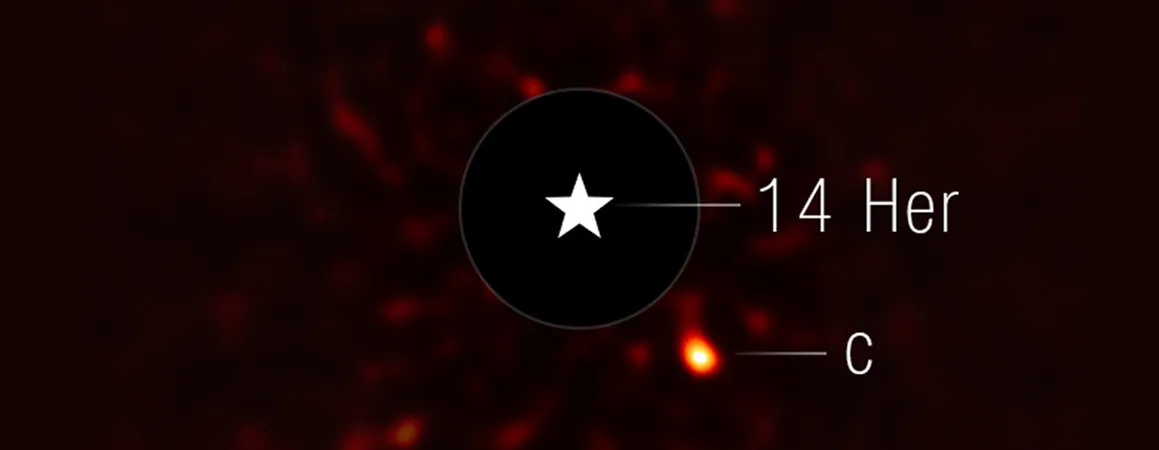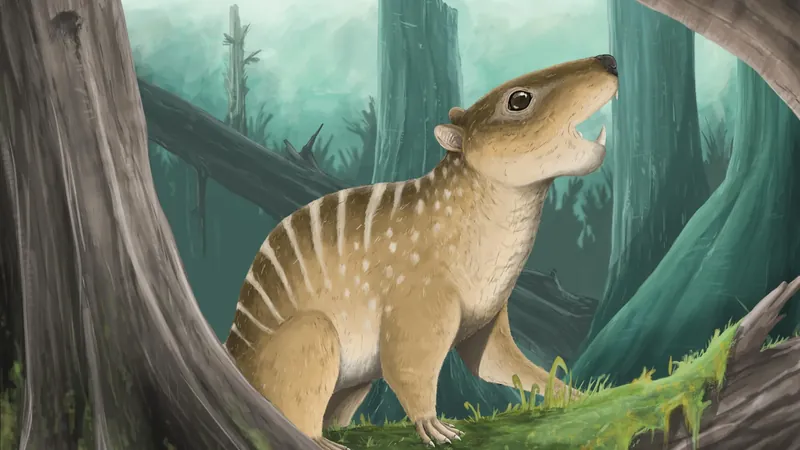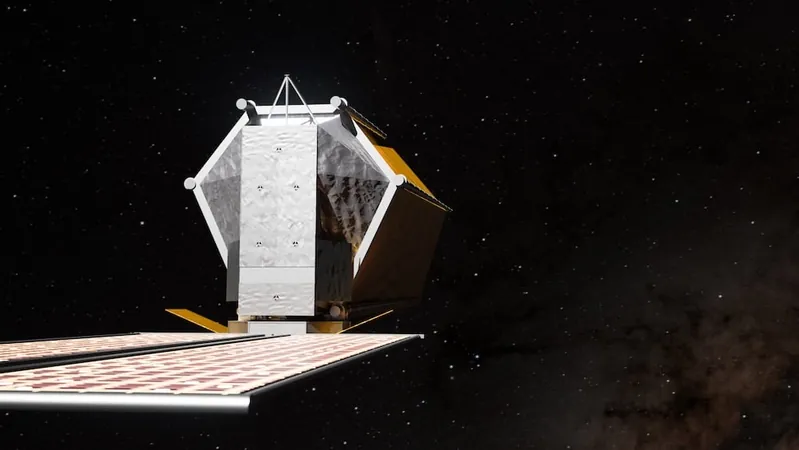
NASA's Webb Telescope Unveils Cold Exoplanet in Chaotic Orbit
2025-06-11
Author: Liam
A Cosmic Revelation from 60 Light-Years Away
In an extraordinary leap for astronomy, NASA's James Webb Space Telescope has captured stunning images of a planetary system described as bizarre and chaotic. This monumental achievement spotlighted the cold exoplanet known as 14 Herculis c, a world located 60 light-years from Earth within our Milky Way galaxy.
Meet 14 Herculis c: The Frigid Giant
14 Herculis c is one of the coldest exoplanets ever imaged. Out of nearly 6,000 discovered exoplanets, only a handful have been directly observed, with most being scorching hot, boasting temperatures in the hundreds or thousands of degrees Fahrenheit. New findings reveal that 14 Herculis c, weighing about seven times more than Jupiter, sits at a frosty 26 degrees Fahrenheit (or -3 degrees Celsius).
Unlocking New Frontiers with Webb
The groundbreaking results regarding 14 Herculis c were recently announced during a press briefing at the 246th American Astronomical Society meeting in Anchorage, Alaska, and submitted to The Astrophysical Journal Letters. William Balmer, a graduate student at Johns Hopkins University and co-first author of the research, stated, "The colder an exoplanet is, the more challenging it is to image—Webb's extreme infrared sensitivity has opened up a new frontier for studying such worlds."
An Unusual System: X Marks the Spot
Webb's imaging of 14 Herculis c has unveiled a planetary system that defies conventional norms. At its center is the star 14 Herculis, which resembles our sun in age and thermal characteristics but is slightly less massive. The system hosts two planets: 14 Herculis b, which orbits closer to the star, and 14 Herculis c, whose orbital paths cross in an unusual 'X' formation at an angle of about 40 degrees. This misalignment hints at a tumultuous history.
The Enigmatic History of 14 Herculis
Scientists speculate on the bizarre orbits of these planets, with one leading theory suggesting that they became chaotic after a third planet was ejected from the system during its formative years. Balmer remarked, "The evolution of our solar system was influenced by massive gas giants. Here, we witness the aftermath of a dramatic cosmic event, which reminds us that larger forces can dictate the paths of smaller planets like Earth."
Delving into Atmospheric Mysteries
The data gathered by Webb not only reveals temperature insights but also hints at the complex atmospheric dynamics of 14 Herculis c. Positioned approximately 1.4 billion miles from its parent star—around 15 times the distance from Earth to the sun—this exoplanet orbits in an elliptical, football-shaped trajectory.
An Unexpected Brightness
Current findings indicate that 14 Herculis c's brightness at a wavelength of 4.4 microns is dimmer than anticipated for its mass and age. This unexpected observation is attributed to carbon disequilibrium chemistry, a behavior observed previously in brown dwarfs. Co-first author Daniella C. Bardalez Gagliuffi of Amherst College explained, "In these cold objects, carbon dioxide and carbon monoxide co-exist at temperatures where one would typically find methane, indicating a dynamic atmosphere where warmer molecules are rapidly transported to cooler layers."
Exciting Future Prospects
Webb's imaging of 14 Herculis c marks just the beginning of a thrilling exploration into this enigmatic planetary system. Future spectroscopic studies could further illuminate the atmospheric properties of this unique exoplanet, paving the way for a deeper understanding of its characteristics and the intricate dynamics shaping its formation.









 Brasil (PT)
Brasil (PT)
 Canada (EN)
Canada (EN)
 Chile (ES)
Chile (ES)
 Česko (CS)
Česko (CS)
 대한민국 (KO)
대한민국 (KO)
 España (ES)
España (ES)
 France (FR)
France (FR)
 Hong Kong (EN)
Hong Kong (EN)
 Italia (IT)
Italia (IT)
 日本 (JA)
日本 (JA)
 Magyarország (HU)
Magyarország (HU)
 Norge (NO)
Norge (NO)
 Polska (PL)
Polska (PL)
 Schweiz (DE)
Schweiz (DE)
 Singapore (EN)
Singapore (EN)
 Sverige (SV)
Sverige (SV)
 Suomi (FI)
Suomi (FI)
 Türkiye (TR)
Türkiye (TR)
 الإمارات العربية المتحدة (AR)
الإمارات العربية المتحدة (AR)